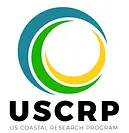Louisiana Roots
Coastal wetlands are valuable ecosystems that provide economic, environmental, and cultural benefits. A range of salinities results in a series of marshes with different vegetation communities, representative of their salinity. These marshes are dependent on vertical accumulation of both organic and mineral material in order to survive high rates of sea level rise. However, long-term predictions of marsh morphodynamics do not account for complex distribution of organic content. In fact, marsh plants distribute organic content not only to the top layer of the sediment, but within the soil. This distribution depends on the plant species, but the details on the vertical distribution of below-ground biomass (i.e., the roots) is difficult to measure. Therefore, we propose to (1) develop species-specific below-ground biomass curves based on bulk density and (2) implement these relationships in a coupling of two existing numerical models – an ecological model of plant community composition and a geomorphic model of marsh systems. We hypothesize that the different root structures of plants will affect the elevation of marshes and result in differing morphodynamic responses along a salinity gradient. The results of this work will develop plant root relationships that can be implemented in any marsh model and demonstrate the morphodynamic impacts of plant community composition and their roots on long-term marsh evolution.
Implementing species-specific root traits into hydrodynamic and geomorphological models of marsh evolution to understand Blue Carbon dynamics


Team Members




